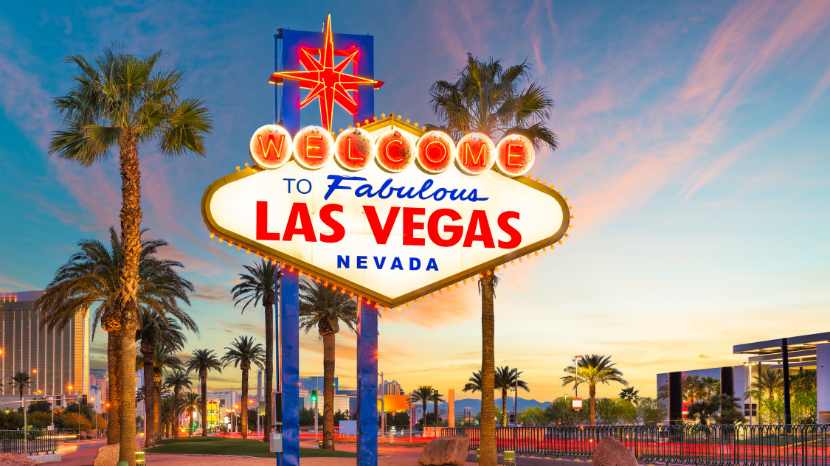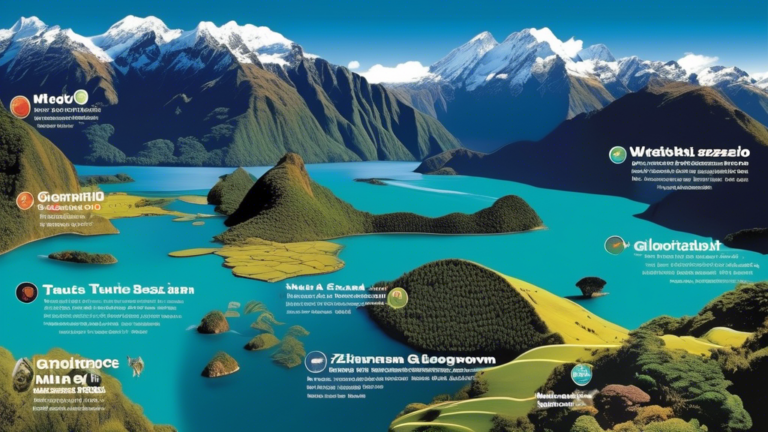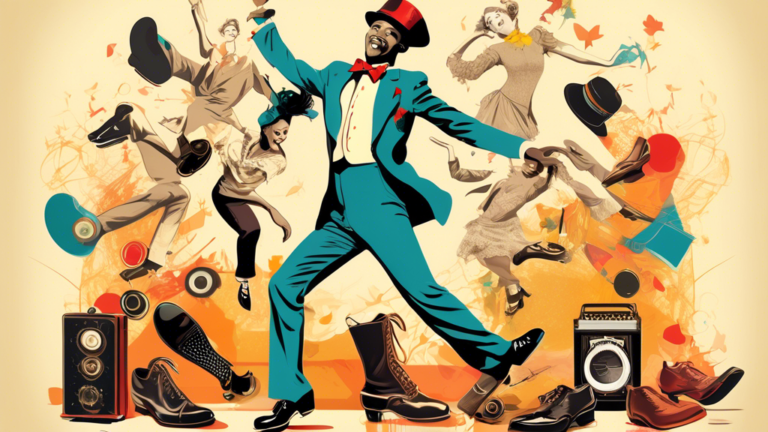Las Vegas, the entertainment capital of the world, is a city that has captured the hearts and imaginations of millions of people worldwide. But did you know that behind the glitz and glamour lies a fascinating history that is just waiting to be discovered?
From its humble beginnings as a small desert town to its present-day status as a mecca of entertainment, Las Vegas has undergone a remarkable transformation over the years. Join us on a journey through time as we explore the captivating evolution of this vibrant city.
More about WORLD&HISTORY
Key Takeaways
- Las Vegas has a rich and colorful history that is often overshadowed by its present-day reputation as a hub of entertainment.
- Before the arrival of settlers, the Las Vegas Valley was home to Native American tribes, including the Southern Paiute people.
- The construction of the Hoover Dam played a pivotal role in shaping the growth of Las Vegas, transforming it from a small desert town into a thriving city.
- Las Vegas has a darker past that includes a notorious era of organized crime, but it has since transformed into a family-friendly destination.
- The city continues to innovate and evolve, with mega-resorts dominating the skyline and top-notch entertainment options that appeal to visitors of all ages.
Native American Roots
Long before the settlers arrived, Las Vegas was home to various Native American tribes, including the Southern Paiute people. These Native American tribes in Las Vegas have a rich and captivating cultural heritage worth exploring.
The Southern Paiute people were a nomadic group of indigenous people, who roamed the vast desert regions of Southern Nevada for generations. They relied on hunting, gathering, and trading to survive. Their culture is deeply rooted in a profound respect for nature and the environment, which is reflected in their art, beliefs, and traditions.
The Paiute people saw the Las Vegas Valley as a sacred place and often gathered there for spiritual purposes. Archaeological evidence suggests that they lived in the area as early as 8000 BC. They built pit houses and hunted small game such as rabbits and rodents.
The arrival of European explorers in the region began to alter the Paiute way of life. In the 1820s, traders and trappers began using the Old Spanish Trail, which passed through the Las Vegas Valley, to transport goods between Santa Fe and California. This event marked the beginning of the end of the Paiute’s traditional way of life.
Native American Roots Still Visible in Las Vegas
Today, the Paiute people and their cultural heritage are celebrated in Las Vegas. The Las Vegas Paiute Tribe has built a museum dedicated to preserving their history and traditions, as well as a championship golf course. The tribe also hosts a powwow each year, inviting other Native American tribes to participate and share their cultures.
Las Vegas may be known for its bright lights and entertainment, but it’s important to remember the deep roots of the city and the people who call it home. Exploring the Native American roots of Las Vegas is a fascinating way to gain a deeper understanding and appreciation of the city’s history and cultural heritage.
Early Exploration and Settlement
Las Vegas may be a bustling metropolis today, but it was once a remote part of the frontier. The area’s history begins with Native American tribes such as the Southern Paiute people, who lived off the land for thousands of years before the arrival of European explorers in the 19th century.
It wasn’t until the early 1800s that the first Western explorers ventured into the Las Vegas Valley, led by Mexican traders on the Old Spanish Trail. Trappers and traders soon followed, drawn by the region’s abundant wildlife and natural resources.
In 1855, Mormon missionaries established a settlement in present-day downtown Las Vegas. However, it wasn’t until 1905 that Las Vegas officially became a city, when the San Pedro, Los Angeles, and Salt Lake Railroad arrived, bringing with it a flood of new settlers and economic opportunities.
Las Vegas Pioneers
The early pioneers of Las Vegas faced numerous challenges, including harsh desert conditions and limited resources. However, their ingenuity and determination allowed them to establish a thriving community that continues to flourish today.
One notable pioneer was Helen J. Stewart, known as the “First Lady of Las Vegas.” Stewart arrived in the area in 1882 and quickly became a prominent rancher and businesswoman, contributing significantly to the development of the city.
By the early 20th century, Las Vegas had become a popular stop for travelers on the nearby Tonopah and Tidewater Railroad. The town’s reputation as a place of rest and relaxation grew, and it continued to attract visitors seeking a respite from the city.
The arrival of the railroad was just the beginning for Las Vegas, as the city would soon undergo a transformation that would forever change its fortunes.
| Year | Event |
|---|---|
| 1855 | Mormon missionaries establish a settlement in present-day Las Vegas. |
| 1905 | Las Vegas officially becomes a city when the San Pedro, Los Angeles, and Salt Lake Railroad arrives. |
Hoover Dam and the Birth of Modern Las Vegas
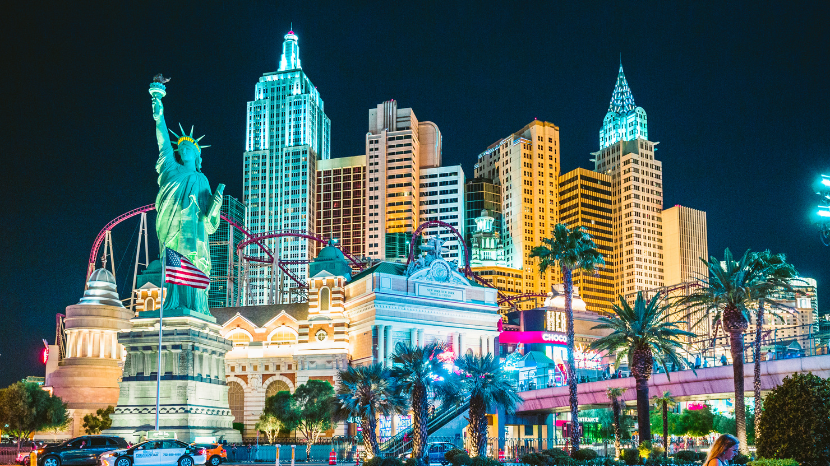
The construction of the Hoover Dam in the 1930s had a profound impact on Las Vegas’ development, transforming it from a small desert town into a thriving city. The dam provided much needed irrigation, which allowed for agriculture to flourish and led to the creation of new jobs.
As construction of the dam progressed, Las Vegas saw a boost in the population, with many workers and their families settling in the area. This in turn led to the development of new businesses and services, such as hotels and restaurants, to cater to the growing community.
However, it wasn’t until the completion of the Hoover Dam in 1936 that Las Vegas truly started to thrive. With the dam providing electricity and water to the region, the city was able to attract new industries, such as manufacturing and tourism. Visitors flocked to Las Vegas to marvel at the engineering feat and enjoy the entertainment options that were becoming available.
By the 1950s, Las Vegas had become a hotspot for entertainment and gambling, drawing in tourists from across the country. Iconic casinos, such as the Flamingo and the Sands, were established, and the city began to foster a reputation as a playground for the rich and famous.
The Impact of the Hoover Dam Today
Today, the Hoover Dam still plays a vital role in Las Vegas’ infrastructure, providing power and water to the city and surrounding areas. It also remains a popular tourist destination, with millions of visitors each year coming to see this architectural marvel.
The dam’s contribution to Las Vegas’ growth cannot be overstated. Without the Hoover Dam, Las Vegas would likely not exist in the form that it does today, and the world-renowned entertainment hub we know and love would never have been born.
Gangsters and the Rise of the Mob
Las Vegas has a darker past that is often associated with the involvement of organized crime, particularly during the mid-20th century. The city became an attractive location for gangsters due to its lax laws and regulations, which allowed them to operate their illegal activities freely.
The infamous mobster, Benjamin “Bugsy” Siegel was one of the first to recognize the potential of Las Vegas as a gambling mecca. He established the Flamingo Hotel and Casino, which not only became a popular destination for gamblers but also a hub for organized crime activities. Siegel’s involvement in the Flamingo ultimately led to his untimely death in 1947, but his legacy remains a significant part of Las Vegas history.
Organized crime continued to exert its influence on Las Vegas during the 1950s and 60s, with notable figures such as Meyer Lansky, Sam Giancana, and Frank Rosenthal playing a prominent role in the city’s underworld. Their involvement in the casino industry allowed them to launder money and control the city’s gambling operations. However, their reign came to an end with the implementation of stricter laws and regulations, as well as law enforcement crackdowns on organized crime activities in Las Vegas.
The stories of the gangsters and the rise of the mob are a fascinating part of Las Vegas history, displaying the city’s complex and multifaceted character. While the city’s past may have been marked by organized crime, it has since transformed into a more family-friendly destination, with a wide array of attractions and entertainment options that cater to visitors of all ages.
The Rat Pack and Golden Age of Entertainment
During the mid-20th century, Las Vegas became synonymous with the glitz and glamour of entertainment. The iconic Rat Pack performers, including Frank Sinatra, Dean Martin, Sammy Davis Jr., and Joey Bishop, took up residence in Las Vegas, performing at casinos and nightclubs, and attracting A-list celebrities and visitors from all over the world.
The Rat Pack brought a unique blend of music, comedy, and cool to the Las Vegas entertainment scene. They would perform on stage together, trading witty banter and improvising skits, creating an atmosphere of fun and unpredictability that captivated audiences.
“Las Vegas without Sinatra is like Disneyland without Mickey Mouse.” – Frank Sinatra
The Rat Pack’s influence extended beyond just their performances. They were known for their after-hours activities, often found hanging out at the casinos and bars, and embodying the free-spirited, anything-goes attitude of Las Vegas.
The Rat Pack’s legacy in Las Vegas entertainment continues to this day. Many of the casinos that hosted their performances, such as the Sands and the Desert Inn, have been replaced by newer, more extravagant resorts. However, the spirit of the Rat Pack lives on in the many tribute shows that take place throughout the city, paying homage to the performers and their legacy.
Transformation into a Family-Friendly Destination
Las Vegas has undergone a remarkable transformation over the years, from a destination known primarily for adult-oriented entertainment to a family-friendly city with something for everyone.
When it comes to family-friendly attractions, Las Vegas boasts endless options. Families can take a ride on the Big Apple Coaster at New York-New York Hotel and Casino, visit the interactive exhibits at the Discovery Children’s Museum, or check out the sharks and other marine life at the Shark Reef Aquarium at Mandalay Bay.
For outdoor enthusiasts, the city also offers plenty of options. From hiking and biking at Red Rock Canyon to kayaking and paddleboarding at Lake Las Vegas, there’s plenty to keep families active and engaged.
And of course, no trip to Las Vegas would be complete without a visit to one of its famous shows. From magic and acrobatics to musical performances, there’s something for all ages and tastes.
So why not bring the whole family to Las Vegas and experience all the city has to offer? With its wide variety of family-friendly attractions and entertainment options, Las Vegas truly has something for everyone.
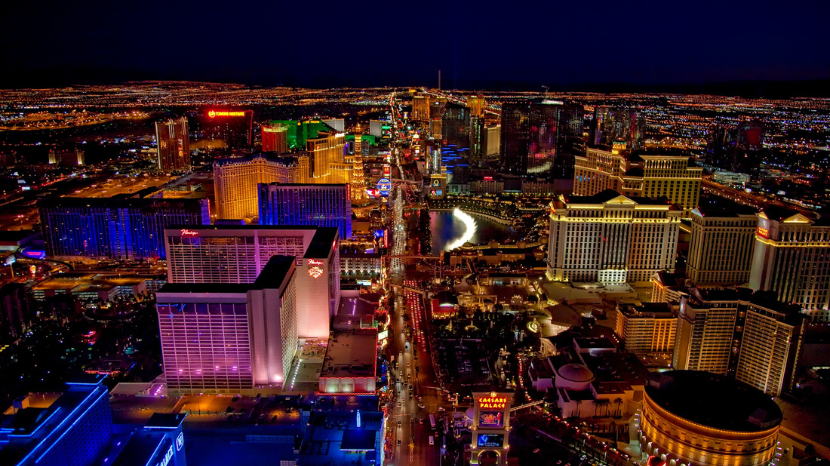
The Mega-Resort Era
As Las Vegas continued to grow, so too did the size and extravagance of its hotels and casinos. The mega-resort era brought about a new level of opulence, with themed hotels and attractions that transported visitors to exotic worlds.
| Hotel | Year Opened | Theme |
|---|---|---|
| Excalibur | 1990 | Medieval Europe |
| The Mirage | 1989 | Tropical paradise |
| New York-New York | 1997 | New York City |
Themed hotels like the Excalibur, The Mirage, and New York-New York offered visitors a unique and immersive experience. Each hotel was designed to transport guests to a different world, complete with elaborate decor, themed restaurants and bars, and even themed slot machines.
“The themed hotels were a game-changer for Las Vegas. They transformed the city into a place where visitors could not only gamble, but also enjoy a world-class resort experience,”
Said a spokesperson for the Las Vegas Convention and Visitors Authority.
The mega-resort era also brought with it a new level of entertainment and attractions. The Bellagio, opened in 1998, featured a stunning fountain show that quickly became an iconic Las Vegas attraction. The Venetian, which opened in 1999, allowed visitors to take a gondola ride through a replica of Venice’s canals.
Today, Las Vegas continues to be at the forefront of resort innovation. From the luxurious amenities of the Wynn and Encore to the high-tech features of the Aria, visitors can expect nothing but the best from the city’s mega-resorts.
Modern Las Vegas: Entertainment Capital of the World
Las Vegas has earned its title as the entertainment capital of the world, offering a dazzling array of entertainment options for visitors from all around the globe. The Las Vegas Strip, a stretch of over 4 miles long, is home to the biggest and brightest casinos, resorts, and attractions in the city.
For those seeking world-class entertainment, Las Vegas offers a variety of shows featuring everything from acrobatics to magic to musical performances from A-list artists. The city has also become a hub for major sporting events, with venues such as the T-Mobile Arena and the Allegiant Stadium hosting events for everything from boxing to football to MMA.
Aside from the shows and sporting events, Las Vegas is also a food lover’s paradise. The city boasts an incredible array of restaurants, ranging from five-star gourmet cuisine to down-to-earth street food. Many of the world’s most well-known celebrity chefs have opened restaurants in Las Vegas, making it a destination for foodies all around the world.
Las Vegas is also famous for its nightlife scene, with an abundance of bars and nightclubs offering everything from high-end cocktails to wild and crazy party atmosphere.
All in all, modern Las Vegas has something for everyone, from families to couples to solo travelers. With unparalleled entertainment options, exquisite cuisine, and thrilling nightlife, it’s no wonder Las Vegas remains one of the most popular tourist destinations in the world.
Discover Las Vegas on Google Maps
Conclusion
As we come to the end of our journey through the captivating history of Las Vegas, we hope that you have gained a deeper appreciation for the city and its transformation into the entertainment capital of the world. From its Native American roots to the establishment of a settlement, and the construction of the Hoover Dam, Las Vegas has undergone a remarkable journey.
We explored the notorious era of organized crime and the rise of the Mob, followed by the golden age of entertainment with legendary performers like Frank Sinatra, Dean Martin, and Sammy Davis Jr. that made Las Vegas the entertainment capital of the world.
As Las Vegas diversified, it became a family-friendly destination with a wide range of attractions for everyone’s enjoyment. The city also witnessed the rise of mega-resorts and themed hotels that dominated the skyline, followed by its modern-day transformation into a city that never sleeps.
The Ultimate Experience Awaits You
Las Vegas truly offers an unforgettable experience that melds history, glitz, and excitement. From world-class shows to gourmet dining, thrilling nightlife, and exceptional hospitality, Las Vegas has something for everyone.
Visit the dazzling Las Vegas Strip and discover the magic that has made this city the entertainment capital of the world. Whether you are a first-time visitor or a frequent guest, Las Vegas never disappoints, and it’s always a good idea to plan your next trip.
Thank you for taking this journey with us and experiencing the colorful history of Las Vegas.
FAQ´s
Q: What is the article about?
A: The article is about the history of Las Vegas, from its humble beginnings to its present-day status as a world-renowned entertainment hub.
Q: Who were the Native American tribes in Las Vegas?
A: Las Vegas was home to Native American tribes, including the Southern Paiute people.
Q: Who were the early explorers and pioneers in Las Vegas?
A: The early explorers and pioneers ventured into the Las Vegas Valley, including those who traveled on the Old Spanish Trail.
Q: How did the construction of the Hoover Dam impact Las Vegas?
A: The construction of the Hoover Dam played a pivotal role in shaping the growth of Las Vegas, transforming it from a small desert town into a thriving city.
Q: What was the involvement of organized crime in Las Vegas?
A: Las Vegas had a notorious era of organized crime, with influential mobsters playing a role in the city’s development and the establishment of iconic casinos.
Q: Who were the influential performers during the golden age of entertainment in Las Vegas?
A: Legendary performers like Frank Sinatra, Dean Martin, and Sammy Davis Jr. were influential during the golden age of entertainment in Las Vegas.
Q: How did Las Vegas transform into a family-friendly destination?
A: Las Vegas diversified its attractions and entertainment options, catering to visitors of all ages and becoming a family-friendly destination.
Q: What is the significance of mega-resorts in Las Vegas?
A: Mega-resorts, with their themed extravagance and innovations, have dominated the Las Vegas skyline and captivated visitors from around the world.
Q: What can visitors expect in modern-day Las Vegas?
A: In modern-day Las Vegas, visitors can experience world-class shows, gourmet dining, thrilling nightlife, and the allure of the Las Vegas Strip.

